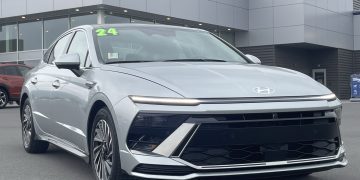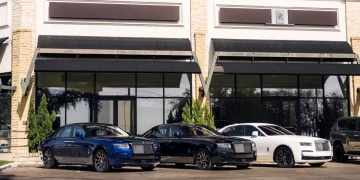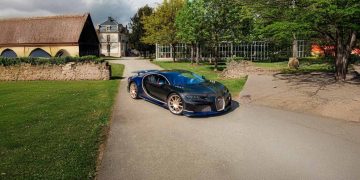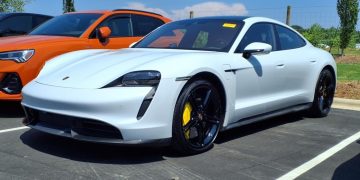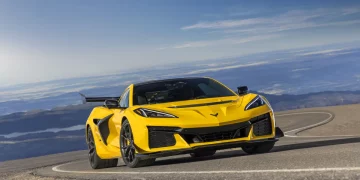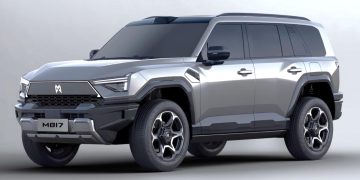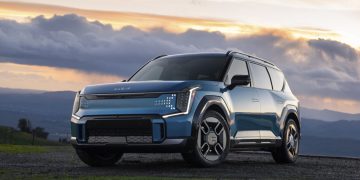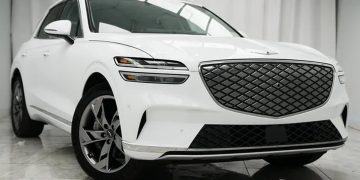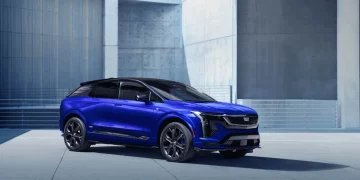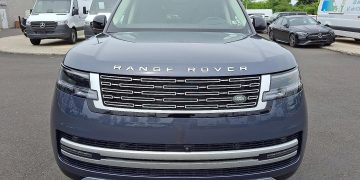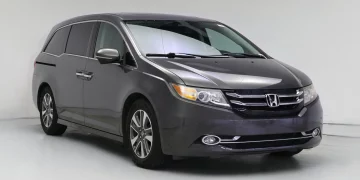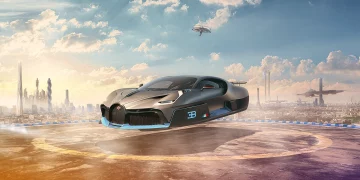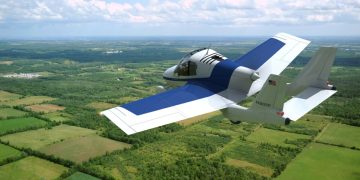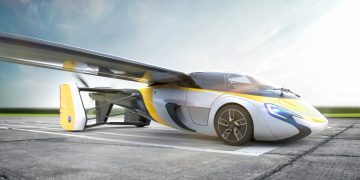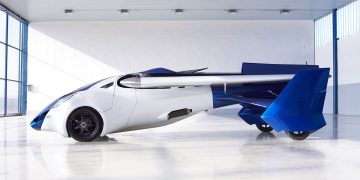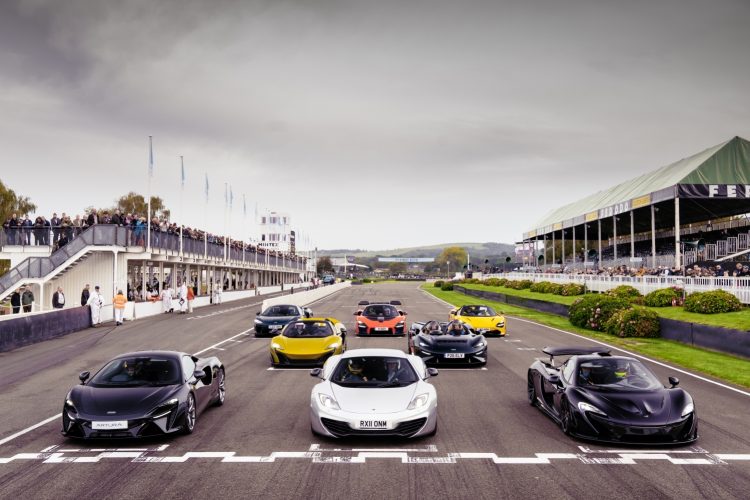Supercars have long been at the forefront of automotive technology and performance. These vehicles, known for their high-speed capabilities, cutting-edge features, and sleek designs, have continuously pushed the boundaries of what is possible in the automotive world. In this article, we will explore how supercars are not only the epitome of performance but also the trailblazers in innovation, setting trends that shape the entire automotive industry. From advancements in aerodynamics to the integration of electric powertrains, supercars lead the way in transforming the future of driving.
1. The Evolution of Supercars: A Legacy of Innovation
Supercars have a rich history that spans several decades, with each new generation pushing the envelope in terms of performance, design, and technology. In the early days, supercars were defined by their powerful internal combustion engines and jaw-dropping speeds. However, as technology advanced, so too did the capabilities of these high-performance machines.
1.1 Early Supercars: The Birth of a New Era
The first supercars began to emerge in the 1960s and 1970s, with vehicles like the Lamborghini Miura and the Ferrari 250 GTO setting the stage for the future of high-performance automobiles. These cars were revolutionary for their time, introducing innovative design elements such as mid-engine layouts, lightweight construction, and enhanced aerodynamics, which would become fundamental to supercar design in the years to come.
1.2 The Rise of Modern Supercars
In the 1980s and 1990s, supercars such as the Ferrari F40, Porsche 959, and McLaren F1 showcased the continued evolution of technology. These cars were equipped with turbocharged engines, advanced suspension systems, and lightweight materials like carbon fiber. Supercar manufacturers began to focus not only on top speed but also on handling, braking, and overall driving experience, leading to a more holistic approach to performance.
2. Technological Advancements in Supercar Design
Supercars have consistently led the way in terms of technological innovation. The race to achieve superior performance has driven the development of groundbreaking technologies that have been adopted by mainstream automakers.
2.1 Aerodynamics: Enhancing Speed and Stability
One of the key areas where supercars have led innovation is in aerodynamics. To achieve high speeds while maintaining stability, supercars incorporate advanced aerodynamic features such as active spoilers, rear diffusers, and sculpted body panels. These design elements not only reduce drag but also increase downforce, allowing for better handling at high speeds.
- Active Aerodynamics: Many modern supercars, like the McLaren P1 and the Ferrari LaFerrari, use active aerodynamics. This technology adjusts the position of spoilers, flaps, and diffusers based on speed and driving conditions, optimizing the vehicle’s aerodynamic efficiency in real-time.
- Carbon Fiber and Lightweight Construction: Supercars have led the way in using carbon fiber and other lightweight materials to reduce vehicle weight without sacrificing strength or safety. Carbon fiber components are now standard in many supercars, providing exceptional rigidity while keeping the overall weight low for enhanced performance.
2.2 Hybrid Powertrains: The Future of High Performance
As environmental concerns have grown, supercar manufacturers have embraced hybrid technology to maintain high performance while reducing emissions. Hybrid supercars combine a traditional internal combustion engine with an electric motor, offering both power and efficiency. These powertrains allow for impressive acceleration and top speeds while also contributing to better fuel efficiency and lower carbon emissions.
- Hybrid Supercars: Models like the Porsche 918 Spyder, Ferrari LaFerrari, and McLaren P1 have demonstrated how hybrid powertrains can be integrated into supercar design. These vehicles are capable of incredible performance, with electric motors providing instant torque and the internal combustion engines delivering sustained high-speed power.
- Electric Supercars: The rise of fully electric supercars, such as the Rimac C_Two and the Lotus Evija, shows that electric powertrains are becoming a viable option for high-performance vehicles. These cars are capable of accelerating from 0 to 60 mph in under 2 seconds, challenging traditional internal combustion-powered supercars in terms of performance.
2.3 Autonomous Driving and Connectivity
While fully autonomous supercars are still a distant reality, many manufacturers are integrating advanced driver-assistance systems (ADAS) and connectivity features that enhance both safety and convenience. These technologies, which were once considered futuristic, are now becoming standard in supercars.
- Driver-Assistance Systems: Features such as lane-keeping assist, adaptive cruise control, and automatic emergency braking are now common in high-performance vehicles, enhancing safety without compromising on driving dynamics.
- Connectivity and Infotainment: Supercars are also leading the way in integrating the latest infotainment systems. These systems offer drivers seamless connectivity with smartphones, real-time navigation, and advanced multimedia options. The focus is on creating an immersive driving experience that blends cutting-edge technology with high performance.

3. Performance: The Heart of Supercar Innovation
When it comes to supercars, performance is the most crucial aspect of their design. These vehicles are built to achieve exceptional speeds, acceleration, and handling, and the innovations in performance technology are often the first to trickle down to more mainstream cars.
3.1 Powertrains: Pushing the Limits of Horsepower
Supercars have always been associated with immense power, and the engines in these vehicles are among the most advanced in the world. The quest for greater horsepower and torque has led to the development of turbocharged, hybrid, and electric powertrains that push the boundaries of automotive engineering.
- Turbocharging: Many modern supercars, such as the Porsche 911 Turbo and Ferrari 488 GTB, use turbocharged engines to achieve higher horsepower and better efficiency. Turbocharging allows for increased power output without significantly increasing engine size or weight.
- Naturally Aspirated Engines: While turbocharged and hybrid engines dominate the market, naturally aspirated engines like the V12 in the Ferrari 812 Superfast still offer unmatched driving experiences. These engines are prized for their throttle response and high-revving capabilities, providing an exhilarating connection between driver and machine.
3.2 Handling and Suspension Technology
Supercars are not just about raw power—they also need to handle exceptionally well on both the track and the road. To achieve this, manufacturers have developed advanced suspension systems, such as active suspension management (ASM) and fully independent suspension setups.
- Active Suspension Systems: Active suspension systems adjust the stiffness and damping of the suspension in real-time, adapting to the road surface and driving conditions. This technology provides superior handling and ride comfort, even at high speeds.
- Dynamic Stability Control: Supercars are equipped with dynamic stability control systems that monitor the car’s performance in real-time, adjusting torque distribution, braking force, and throttle response to maintain optimal stability and traction. These systems allow supercars to tackle corners and sharp turns with ease while maintaining control at high speeds.
3.3 Braking Performance: Stopping Power at High Speeds
Braking technology is another area where supercars excel. The ability to stop at high speeds is as important as achieving those speeds in the first place. Carbon-ceramic brakes are a common feature in supercars, offering exceptional stopping power and resistance to heat buildup.
- Carbon-Ceramic Brakes: These high-performance brake systems are lighter and more durable than traditional steel brakes, providing consistent performance during intense braking situations, such as on a race track.
- Regenerative Braking: In hybrid and electric supercars, regenerative braking systems are used to recover energy during braking and feed it back into the battery, further enhancing overall performance and efficiency.
4. The Future of Supercars: What’s Next?
As we look to the future, supercars will continue to lead the way in terms of innovation, pushing the boundaries of performance, sustainability, and technology. With the rise of electric and hybrid powertrains, advanced autonomous systems, and greater connectivity, supercars are set to evolve in ways that we can only imagine.
4.1 The Transition to Fully Electric Supercars
While hybrid technology has gained traction in recent years, the future of supercars is likely to be fully electric. With advancements in battery technology, electric supercars will be able to offer the same high-performance characteristics as their gasoline-powered counterparts, if not better.
- Battery Technology: The development of lighter, more energy-dense batteries will allow for longer ranges and faster charging times, making electric supercars more viable for everyday use.
- Electric Drivetrains: Fully electric supercars, such as the Rimac C_Two, demonstrate the potential of electric drivetrains to deliver instant torque, exceptional acceleration, and incredible handling. As technology advances, more manufacturers will follow suit, and electric supercars will become a common fixture in the market.
4.2 Sustainability and the Eco-Conscious Supercar
As the automotive industry becomes more eco-conscious, supercar manufacturers are incorporating sustainable practices into their designs. From using recyclable materials to developing more fuel-efficient powertrains, supercars are increasingly becoming more environmentally friendly while still maintaining their performance credentials.
5. Conclusion: Supercars as Catalysts for Automotive Innovation
Supercars have always been more than just high-performance vehicles; they are the testing ground for automotive innovation. From aerodynamics and hybrid powertrains to advanced suspension systems and cutting-edge connectivity, supercars have continuously led the way in developing new technologies that push the boundaries of what is possible.
As the industry moves toward electrification and autonomous driving, supercars will continue to set the trends, inspiring future generations of vehicles that prioritize both performance and sustainability. For automotive enthusiasts, this ongoing evolution is a thrilling journey that promises even more breakthroughs in the years to come.

